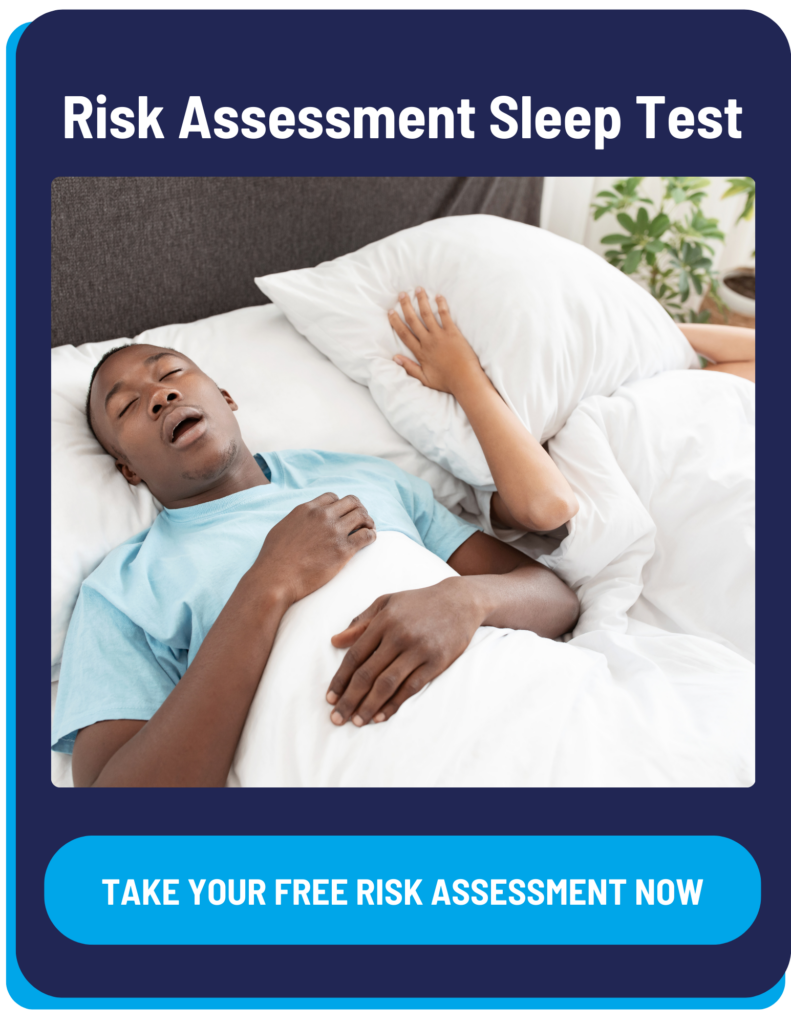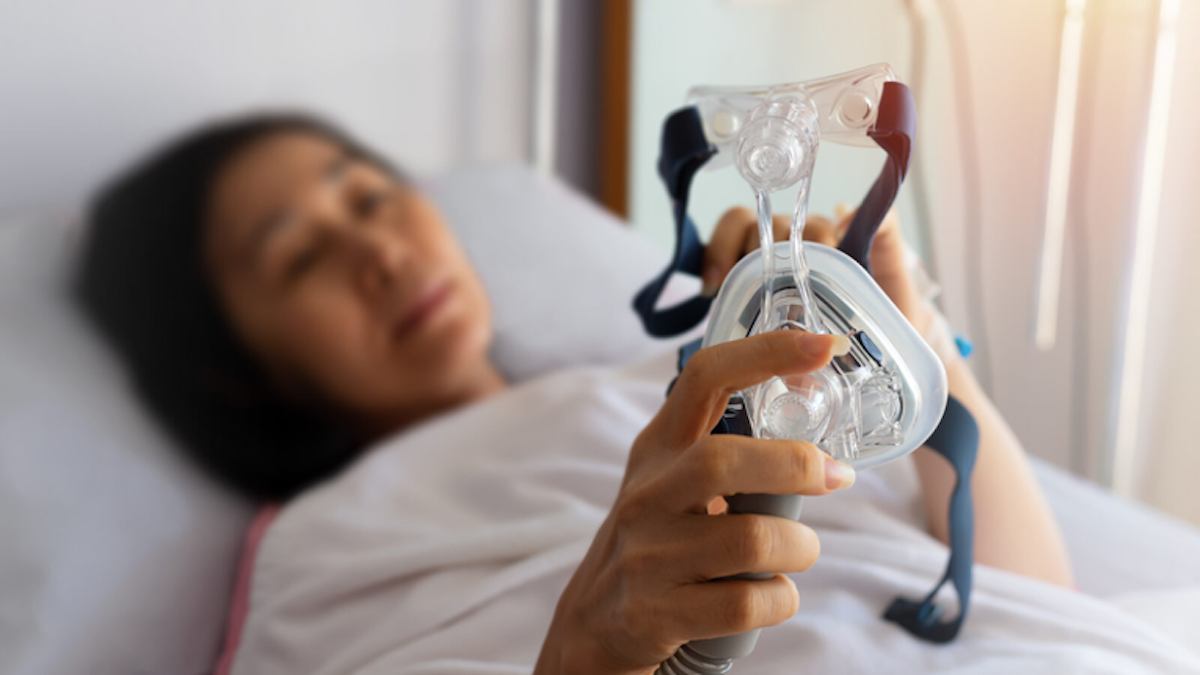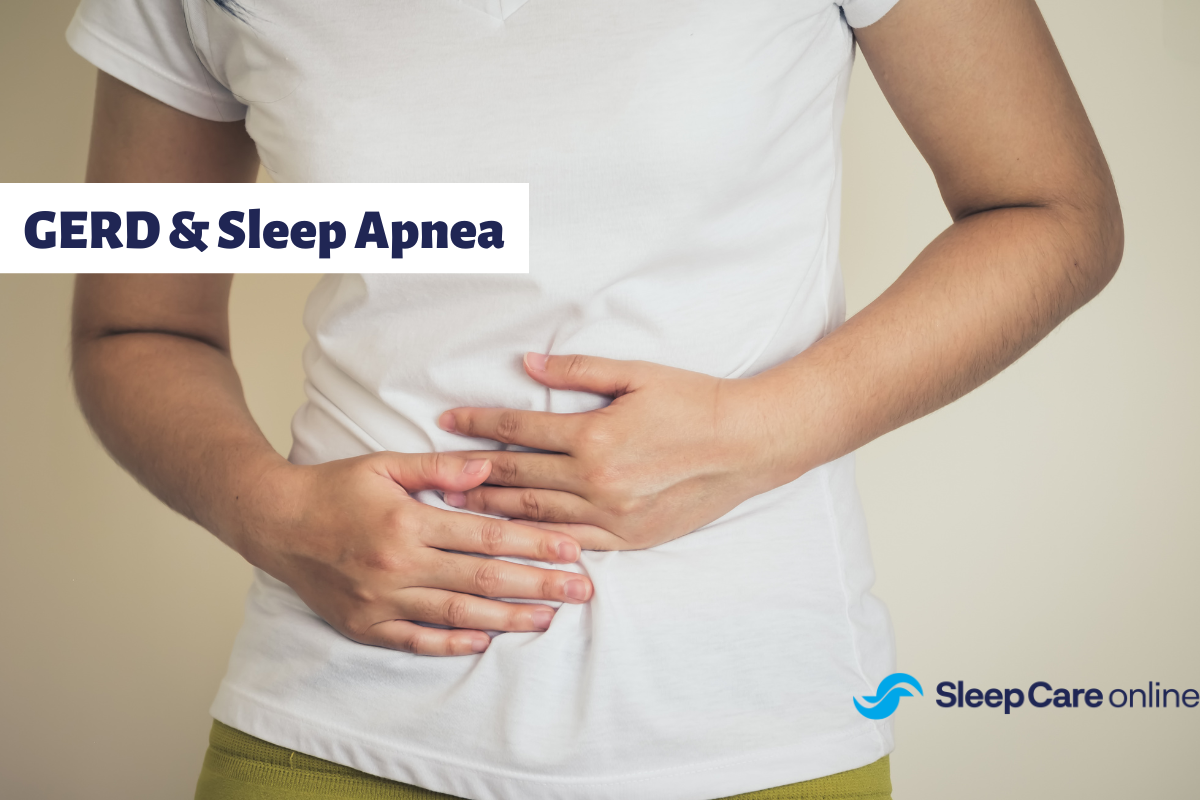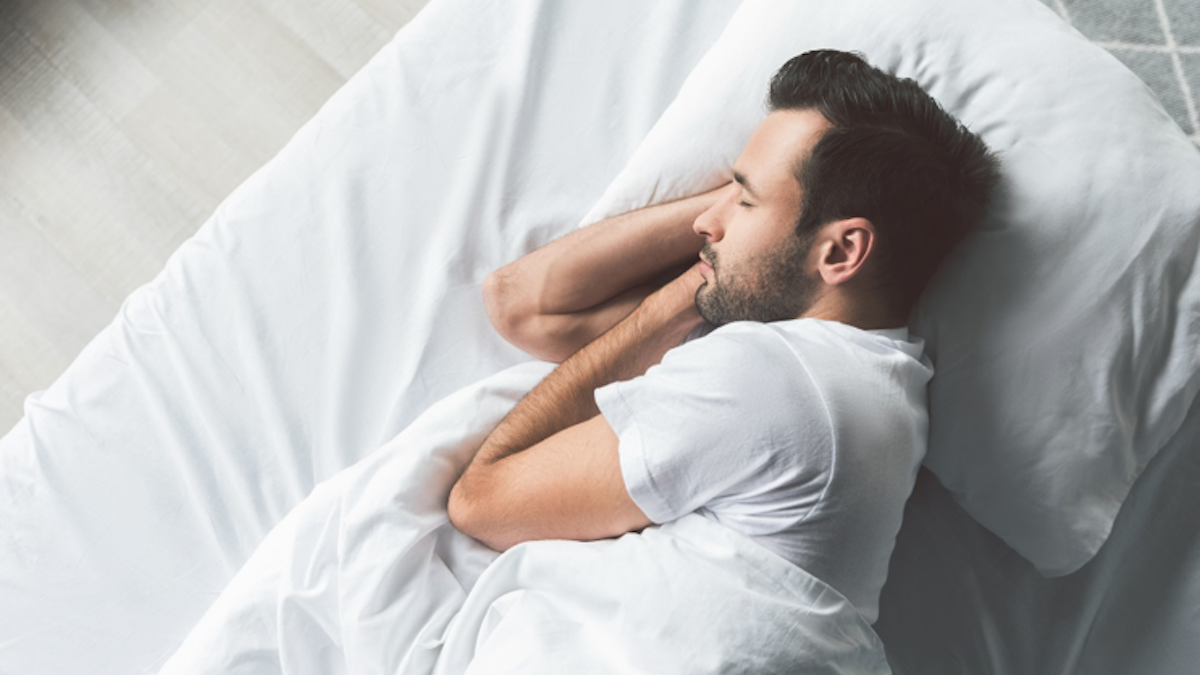Key Takeaways
- Since sleep apnea has a few different forms, it’s important to know the differences and the treatment options between them. While they all appear while a person is sleeping, their causes and risk factors are different.
- Being aware of common symptoms and risk factors of sleep apnea can have a big impact on getting proper treatment.
- Doctors and other healthcare providers can provide suitable treatment to improve the symptoms and overall health of those who have any form of sleep apnea.
What is the Difference Between Central Sleep Apnea & Obstructive Sleep Apnea?
Sleep apnea can manifest in different forms. Two of these forms are obstructive sleep apnea, which is the most common, and central sleep apnea, which is considered more rare. Obstructive sleep apnea centers on the airway closing while you sleep. This results in difficulty breathing while sleeping due to the upper airway obstruction. Central sleep apnea is centered in the brain and the signals it sends to the muscles in the airway to stay open while sleeping. Both types of sleep apnea can lead to similar symptoms which can affect the healthy sleep of individuals. Both types have long-term serious health outcomes. However, the treatment of both obstructive sleep apnea and central sleep apnea may be different.
What is Obstructive Sleep Apnea?
Obstructive sleep apnea (OSA) is a very common sleep disorder. It occurs when a person has difficulty breathing at night, due to upper airway constriction. A person’s throat muscles relax too much and don’t allow normal breathing, causing a person to wake up, gasping for air, and more. OSA can be classified as a breathing interruption during sleep, for longer than 10 seconds at least 5 times per hour (on average).
Symptoms Of Obstructive Sleep Apnea
Symptoms of obstructive sleep apnea are often overlooked but can be a red flag for a serious sleep disorder. Common signs and symptoms of obstructive sleep apnea include:
- Snoring loudly
- Excessive tiredness during the day
- Breathing stopping and starting during the night
- Waking up choking or gasping for air
- Waking up with a dry mouth or sore throat
- Headaches in the morning
- Unable to concentrate
- Feelings of depression
- Feelings of irritability
If symptoms are ignored, long-term health consequences can then arise, including heart and mental health issues, diabetes, and even one’s cognitive functioning from day to day. Determining if you have obstructive sleep apnea early can lead to treatment that gives you the healthy sleep you need to improve overall health and well-being.
Risk Factors Of Obstructive Sleep Apnea
Although mostly anyone can develop OSA, there are certain reasons that can put someone at an increased risk, including:
Being Overweight. Most people who have OSA are overweight. That’s because the excess weight is stored as fat deposits around a person’s neck that result in obstructed breathing. Additionally, some people who are overweight or obese also have medical conditions like hypothyroidism and polycystic ovary syndrome, which are also risk factors that promote OSA.
Old Age. As a person gets older, the risk of having OSA naturally increases.
Hypertension. Also known as high blood pressure, hypertension is common in those who have obstructive sleep apnea.
Tight Airways. Having narrow airways could be from genetics. Also, large tonsils or adenoids could also block a person’s airway.
Chronic Nasal Congestion. OSA is twice as common in those who have chronic nasal congestion.
Smoking. Those who smoke also have a higher chance of getting OSA.
Having Diabetes. Those who have diabetes also have a higher risk of having OSA.
Treatment Options For Obstructive Sleep Apnea
Therapies
Common therapies for obstructive sleep apnea include PAP therapy. PAP therapy uses pressurized air pumped from a CPAP machine to help keep the airway open while you sleep. A doctor will prescribe the CPAP machine and determine the proper pressure setting to help you achieve the healthy sleep you need.
Some people will find CPAP therapy difficult to adjust to so may choose other options including BiPAP therapy. BiPAP therapy uses two alternate pressure settings when you exhale and inhale to improve the comfort level of the therapy.
Auto CPAP is another option that is especially useful to new patients of CPAP. An auto CPAP machine will start with a lower more comfortable pressure setting as you fall asleep and then ramp up to your prescribed setting once you are fast asleep. This can help patients stay CPAP compliant without discomfort issues.
Lifestyle Changes
Lifestyle changes can also help improve sleep health with obstructive sleep apnea. You can:
Keep a consistent sleep schedule. Erratic sleep schedules can ruin healthy sleep. Go to bed at about the same time every night to help your body learn to sleep well.
Quit smoking. Smoking aggravates the airway and can make sleep apnea symptoms worse.
Reduce alcohol consumption near bedtime. Try to limit the amount of alcohol you consume and limit the time when you drink alcohol, about two or three hours before bedtime. Alcohol can relax the throat muscles and increase the frequency of “apneas.”
Avoid blue light devices near bedtime. TVs, computers, and also your phone can alert your brain that it is daytime and time to wake up and not sleep. Blue light devices avoided near bedtime help your mind and also the body prepare for healthy sleep.
What is Central Sleep Apnea?
Central sleep apnea is rarer than the other types of sleep apnea. However, it is just as dangerous if it is left untreated. Central sleep apnea occurs when a person’s brain does not send the proper signals to the muscles that control breathing while sleeping. Additionally, central sleep apnea is typically caused by other underlying medical conditions or by the use of narcotics.
Symptoms Of Central Sleep Apnea
Symptoms of central sleep apnea are very similar to those of obstructive sleep apnea, which can make diagnosing one form of the condition over the other very difficult for doctors. They can include:
- Excessive daytime sleepiness, because of sleep loss at night
- Loud snoring
- Observed episodes of stopped breathing during sleep which can lead to choking in the middle of the night
- Abrupt awakenings accompanied by gasping or choking
- Awakening with a dry mouth or sore throat
- Morning headache
- Difficulty concentrating during the day as sleep loss starts to affect your cognitive function
- Mood changes, such as depression or irritability
- Increased likelihood of accidents as sleep loss has impacted your cognitive ability, balance, and coordination
Types Of Central Sleep Apnea
The cause varies with the type of central sleep apnea you have. Types include:
Cheyne-Stokes breathing. This type of central sleep apnea is most commonly associated with congestive heart failure or stroke.
Drug-induced apnea. Taking certain medications such as opioids — including morphine (MS Contin, Kadian, others), oxycodone (Roxicodone, Oxycontin, others), or codeine.
High-altitude periodic breathing. A Cheyne-Stokes breathing pattern can occur if you’re at a very high altitude. The change in oxygen at this altitude is the reason for the alternating rapid breathing (hyperventilation) and under-breathing.
Treatment-emergent central sleep apnea. Some people with obstructive sleep apnea develop central sleep apnea while using continuous positive airway pressure (CPAP) for their sleep apnea treatment.
Medical condition-induced central sleep apnea. Several medical conditions, including end-stage kidney disease and stroke, may give rise to central sleep apnea of the non-Cheyne-Stokes variety.
Idiopathic (primary) central sleep apnea. The cause of this uncommon type of central sleep apnea is unknown.
Risk Factors Of Central Sleep Apnea
Certain factors put you at increased risk of central sleep apnea:
Sex. Males are more likely to develop central sleep apnea than females.
Age. Central sleep apnea is more common among older adults, especially those older than age 60. This could be because people older than 60 are likely to have other medical conditions or sleep patterns that are linked to central sleep apnea.
Heart disorders. People with irregular heartbeats (atrial fibrillation) or whose heart muscles don’t pump enough blood for the body’s needs (congestive heart failure) are also at greater risk of central sleep apnea.
Stroke, brain tumor, or a structural brainstem lesion. These brain conditions can impair the brain’s ability to regulate breathing.
High altitude. Sleeping at an altitude higher than your normal altitude may increase your risk of sleep apnea. High-altitude sleep apnea resolves a few weeks after returning to a lower altitude.
Opioid use. Opioid medications may increase the risk of central sleep apnea.
Treatment Options For Central and Obstructive Sleep Apnea
CPAP Therapy
This method also used to treat obstructive sleep apnea, involves wearing a mask over your nose or your nose and mouth while asleep. The mask is attached to a small pump that supplies a continuous amount of pressurized air to hold open your upper airway. CPAP may prevent airway closure that can trigger central sleep apnea. The device must only be used in a way that a doctor prescribes it. If the pressure feels too high or the mask you wear is uncomfortable, then it is recommended to talk to your healthcare provider, as the prescribed settings or CPAP mask being worn can be changed.
CPAP therapy is one of the most common methods for treating sleep apnea and is for OSA and central sleep apnea.
Avoid Or Reduce Opioid Medications
If opioid medications are causing your central sleep apnea, then your doctor might gradually reduce your dose of those medications. This process can take some time as opioid use can be addictive. But reducing opioid medications can help the throat muscles adapt to normal breathing during sleep. These medications can relax the airway muscles too much which can lead to an increased frequency of sleep apnea episodes.
In some instances, loose dosages of some milder types of opioids can be ceased on your own.
Phrenic Nerve Stimulation
A phrenic nerve stimulator is implanted surgically by placing an electrode behind the phrenic nerve, either in the neck or in the chest. This electrode is connected to a radiofrequency receiver which is implanted just under the skin.
The external transmitter and antennas of the phrenic nerve stimulator send radio frequency energy to the implanted receivers just under the skin. The receivers then convert the radio waves into stimulating pulses. These pulses are then sent down the electrodes to the phrenic nerves, causing the diaphragm to contract. This contraction causes the patient to inhale. When the pulses stop, the diaphragm relaxes and the patient exhales. Repetition of this series of pulses produces a normal breathing pattern.
Adaptive Servo Ventilation (ASV)
If CPAP doesn’t effectively treat your condition, ASV might be the next thing to try. Like CPAP, ASV also delivers pressurized air. This non-invasive ventilatory treatment and positive airway pressure (PAP) unit, ASV works by continuously monitoring for abnormalities and adjusting to correct individuals’ breathing.
While ASV and CPAP machines are both categorized as positive airway pressure units, they have a handful of differences. CPAP works by continuously delivering a pre-set or fixed amount of air pressure to the user. On the other hand, ASV responds to the user’s breathing and adjusts the amount of air pressure it administers.
ASV might not be the right treatment method for everyone, but it’s important to understand your treatment options as you work to manage your sleep apnea condition.
BiPAP Therapy
BiPAP delivers two separate pressures during therapy – one for inhalation and one for exhalation. Unlike ASV, the pressure during inhalation is a set pressure. Additionally, BiPAP machines can be set to deliver air when a breath hasn’t been detected within a certain amount of time.
Unlike CPAP, ASV adjusts the amount of pressure breath-by-breath during inhalation to smooth out your breathing pattern. The device might also automatically deliver a breath if you haven’t taken a breath within a certain number of seconds. ASV isn’t recommended for people with symptomatic heart failure.
How to Distinguish Between Obstructive Sleep Apnea And Central Sleep Apnea
| Obstructive Sleep Apnea | Central Sleep Apnea | |
| Cause | Airway closing during sleep due to relaxing airway muscle | Brain signals causing the airway to close during sleep |
|---|---|---|
| Risk Factors |
|
|
| Treatment |
|
|
Conclusion
The key to successful sleep apnea treatment is to first determine the type of sleep apnea you have. Both obstructive sleep apnea and central apnea affect the closure of the airway. But central sleep apnea differs in that the problem comes from the brain sending signals to the airway muscle rather than the airway closing on its own.
With a proper diagnosis, doctors can pursue the correct course of treatment to help reduce symptoms and improve healthy sleep for those with either obstructive sleep apnea or central sleep apnea. Sleep Care Online is a simple, safe, and affordable way to get tested for sleep disorders from the comfort of your home. To learn more, visit us online or call us at 866-465-7748.





